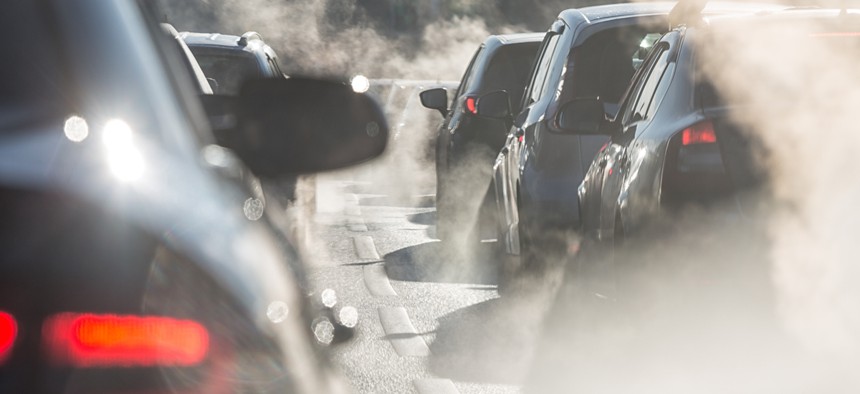The Disproportionate Effects of Air Pollution

Researchers found that traffic-related pollutants were a top contributor, meaning that neighborhoods close to interstates and highways were particularly at risk of cancer. Shutterstock
Residents of poor and segregated neighborhoods around St. Louis had heightened risk of cancer due to increased exposure to air pollutants, including car emissions, researchers found.
Residents in poor, segregated neighborhoods in the St. Louis metropolitan area have higher risks of cancer due to increased exposure to air pollutants, according to a recent study by researchers from Washington University.
Researchers found that roughly 14% of the area’s census tracts had heightened cancer risk, according to the study, published in October in Environmental Research. Risks were particularly elevated in neighborhoods where residents were unlikely to encounter people of a different race or economic status, known as “racial and economic isolation.”
“These findings provide strong evidence of unequal distribution of carcinogenic air toxics in the St. Louis metropolitan area,” researchers wrote. Those results, they added, “may be used to inform public health efforts to eliminate sociodemographic inequalities in exposure to air pollutants.”
To quantify the problem, researchers examined data from the Environmental Protection Agency on risk from exposure to various concentrations of chemicals that are known or suspected to cause cancer. They also used geographic information systems to identify “statistically significant clusters” of census tracts with elevated cancer risks due to known air toxics in the metropolitan area.
According to the results, census tracts with high levels of poverty and unemployment and low levels of education were more likely to be exposed to air pollutants, while higher-income neighborhoods were less likely to be located in those “air toxic hotspots.” Areas with the highest levels of racial and economic isolation “were five times more likely to be located in air toxic hotspots than those with (the) lowest proportions,” the study said. Traffic-related pollutants were a top contributor, meaning that neighborhoods closer to interstates and highways were more likely to have elevated risk of cancer.
The results are not unprecedented, researchers noted, as “multiple studies have documented sociodemographic disparities in exposure to air pollution.” But the study, they wrote, lends credence to previously raised theories that “disparities in exposure to ambient environmental hazards may result in racial disparities in health outcomes.”
The findings could be used to develop policy and interventions to “reduce and eliminate” disparities in exposure, researchers concluded. In particular, officials should work to reduce emissions and promote housing policies that fight both racial and economic segregation, they advised.
“Reducing segregation may lead to a reduction in social disparities and an improvement in neighborhood environments, including higher property values and better-resourced public services,” the study concludes. “These improved neighborhood environments may attract more affluent residents, which could lead to more public and political engagement over land-use policy decisions and result in the reduction the both the disparities in exposure to air toxics and the disparities in air toxics-related cancer risk.”
Kate Elizabeth Queram is a Staff Correspondent for Route Fifty and is based in Washington, D.C.
NEXT STORY: Foster Care Adoptions Reach Record High





